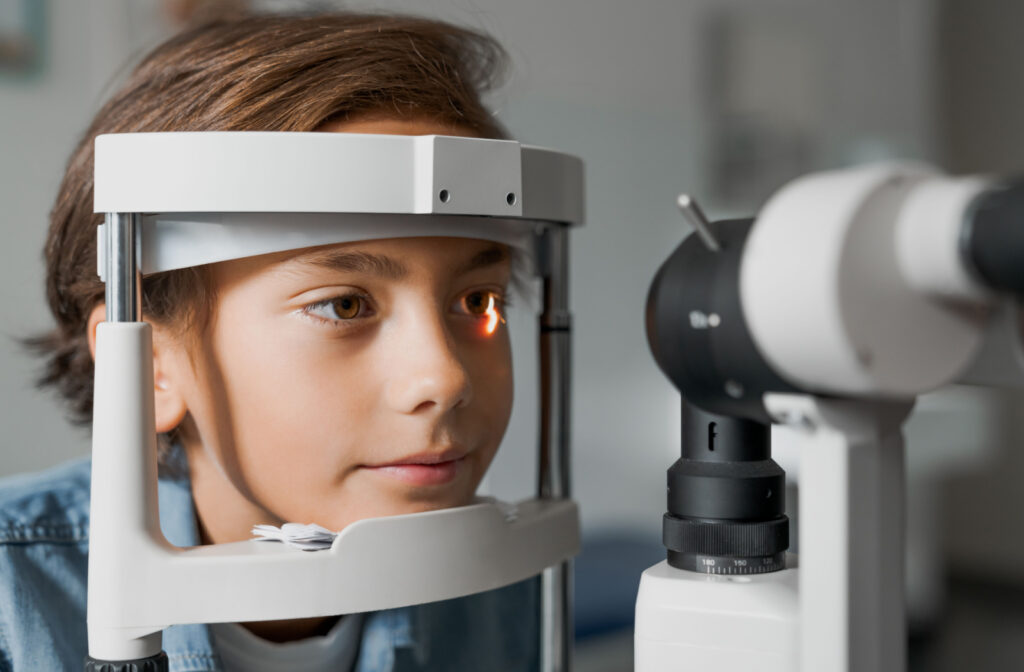All Categories
Featured
Reduced vision, a problem where traditional glasses, get in touch with lenses, or surgical procedure can not fully recover view, can make daily activities testing. Fortunately, low vision recovery supplies a series of sources to assist people keep their self-reliance and lifestyle. This short article discovers the choices offered for those looking for assistance in managing their aesthetic disabilities.
What Is Low Vision Rehabilitation?
Reduced vision rehab is an organized approach to assist people maximize their remaining vision and adjust to brand-new ways of doing everyday jobs. Specialists collaborate with individuals to establish customized techniques, incorporating devices, techniques, and training programs that fit their one-of-a-kind needs.
![]()
Trick Options for Reduced Vision Rehabilitation
Vision Enhancing Devices
Optical Aids: Tools like magnifiers, telescopic glasses, and special analysis lenses can boost clearness for reading, creating, and other close-up tasks.
Digital Aesthetic Aids: Tools such as digital magnifiers and mobile video magnifiers supply flexible zoom capacities for numerous tasks.
Wearable Innovation: Smart glasses furnished with cams and voice comments deal cutting-edge remedies for enhancing vision.
![]()
Assistive Technology
Screen visitors, text-to-speech applications, and devices with voice commands make technology easily accessible for people with reduced vision.
Smartphone applications, such as navigation aids and object acknowledgment tools, assistance customers engage with their surroundings better.
Educating and Therapy
Positioning and Flexibility Training: Professionals instruct abilities for browsing spaces safely, consisting of making use of white walking canes or guide pet dogs.
Daily Living Abilities Training: Rehab programs offer techniques for cooking, cleaning, and individual treatment, making certain that individuals can do essential tasks separately.
Visual Skills Training: Exercises made to enhance the usage of continuing to be peripheral vision can enhance aesthetic performance.
Environmental Adaptations
Adjustments to living or workspaces can significantly enhance ease of access. Examples include:
Setting up brighter lights.
Adding high-contrast markings to devices.
Organizing furnishings to create clear pathways.
Support Networks
Emotional and psychological support is a critical part of rehab. Support system, therapy sessions, and therapy solutions can help people cope with the difficulties of vision loss.
![]()
Peer networks link individuals with comparable experiences, promoting a sense of community and shared understanding.
Just How to Gain Access To Reduced Vision Rehabilitation Provider
Reduced vision rehab solutions are typically provided by:
Reduced Vision Clinics: Operated by ophthalmologists and eye doctors specializing in vision impairments.
Physical Therapists: Experts in adjusting tasks and settings to fit individual needs.
Not-for-profit Organizations: Teams such as the American Structure for the Blind (AFB) or local blindness support companies offer valuable resources and referrals.
Verdict
Dealing with low vision can feel frustrating, yet with the appropriate support and devices, individuals can proceed to lead fulfilling lives. Reduced vision rehab gives a variety of resources tailored to improve performance, increase self-confidence, and enhance high quality of life. Consider reaching out to an expert or recovery facility to explore the many choices offered if you or an enjoyed one is facing the challenges of reduced vision. Together, these remedies ensure that vision loss does not define or limit one's potential.
What Is Low Vision Rehabilitation?
Reduced vision rehab is an organized approach to assist people maximize their remaining vision and adjust to brand-new ways of doing everyday jobs. Specialists collaborate with individuals to establish customized techniques, incorporating devices, techniques, and training programs that fit their one-of-a-kind needs.

Trick Options for Reduced Vision Rehabilitation
Vision Enhancing Devices
Optical Aids: Tools like magnifiers, telescopic glasses, and special analysis lenses can boost clearness for reading, creating, and other close-up tasks.
Digital Aesthetic Aids: Tools such as digital magnifiers and mobile video magnifiers supply flexible zoom capacities for numerous tasks.
Wearable Innovation: Smart glasses furnished with cams and voice comments deal cutting-edge remedies for enhancing vision.

Assistive Technology
Screen visitors, text-to-speech applications, and devices with voice commands make technology easily accessible for people with reduced vision.
Smartphone applications, such as navigation aids and object acknowledgment tools, assistance customers engage with their surroundings better.
Educating and Therapy
Positioning and Flexibility Training: Professionals instruct abilities for browsing spaces safely, consisting of making use of white walking canes or guide pet dogs.
Daily Living Abilities Training: Rehab programs offer techniques for cooking, cleaning, and individual treatment, making certain that individuals can do essential tasks separately.
Visual Skills Training: Exercises made to enhance the usage of continuing to be peripheral vision can enhance aesthetic performance.
Environmental Adaptations
Adjustments to living or workspaces can significantly enhance ease of access. Examples include:
Setting up brighter lights.
Adding high-contrast markings to devices.
Organizing furnishings to create clear pathways.
Support Networks
Emotional and psychological support is a critical part of rehab. Support system, therapy sessions, and therapy solutions can help people cope with the difficulties of vision loss.

Peer networks link individuals with comparable experiences, promoting a sense of community and shared understanding.
Just How to Gain Access To Reduced Vision Rehabilitation Provider
Reduced vision rehab solutions are typically provided by:
Reduced Vision Clinics: Operated by ophthalmologists and eye doctors specializing in vision impairments.
Physical Therapists: Experts in adjusting tasks and settings to fit individual needs.
Not-for-profit Organizations: Teams such as the American Structure for the Blind (AFB) or local blindness support companies offer valuable resources and referrals.
Verdict
Dealing with low vision can feel frustrating, yet with the appropriate support and devices, individuals can proceed to lead fulfilling lives. Reduced vision rehab gives a variety of resources tailored to improve performance, increase self-confidence, and enhance high quality of life. Consider reaching out to an expert or recovery facility to explore the many choices offered if you or an enjoyed one is facing the challenges of reduced vision. Together, these remedies ensure that vision loss does not define or limit one's potential.
Latest Posts
The Perfect Flooring for each Home
Published Apr 18, 25
1 min read
Discover the Trademark Specials at Deauville Inn
Published Apr 18, 25
1 min read
Built on Top Quality, Driven by Solution
Published Apr 18, 25
1 min read